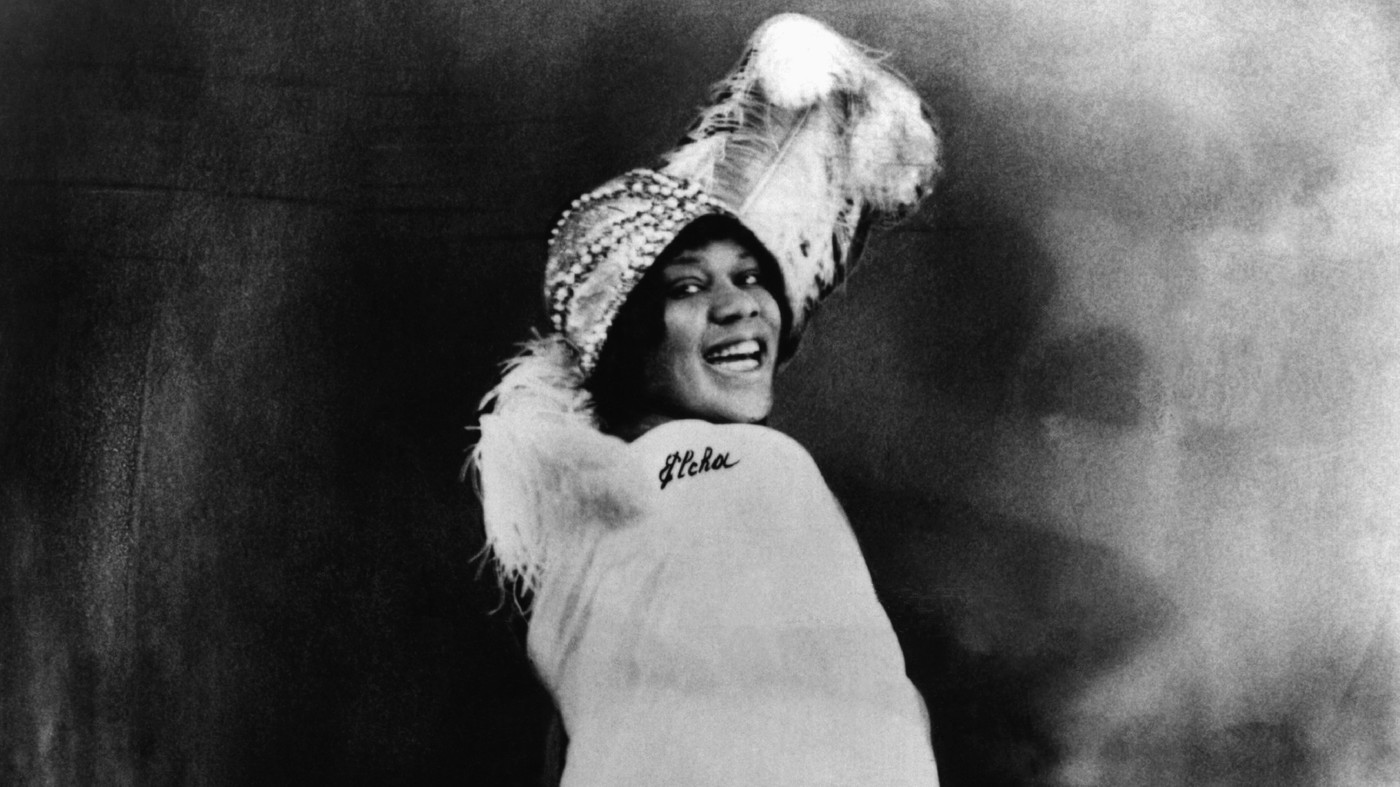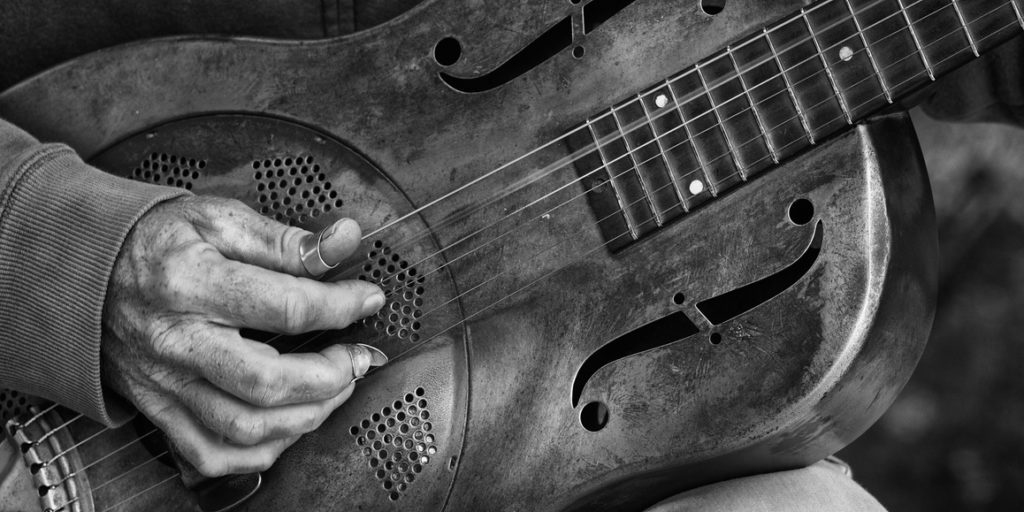At the end of our previous article of this Blues series, we saw the beginning of the adoption of the term “blues” within the sheet music industry. The increased use of the term and popularity of songs such as “I Got The Blues” and “Dallas Blues” led to a rise in the popularity of the genre. Along with the increased use of the term “blues” in song titles, classic black female blues singers were also gaining fame which prompted the then budding recording industry to introduce a category of records known as “race records.” These race records were blues, R&B, soul, and gospel records that were specifically marketed to African Americans. The recording and widespread distribution of these race records would eventually play a vital role in the dramatic increase in the popularity of the blues in the 1920s.
Adoption of “blues” tunes by mainstream performers
By the end of 1912, the publication and adoption by mainstream performers of tunes like “Dallas Blues,” “Baby Seals Blues,” and “Memphis Blues” further popularized the term “blues” in America. “Dallas Blues” and “Baby Seals Blues” were particularly popular in vaudeville shows. Vaudeville shows were traveling theatrical performances that were extremely popular in the United States between 1880 and 1930. These shows featured a series of acts that included musicians, dancers, comedians, trained animals, magicians, strongmen, acrobats, jugglers, and many other forms of entertainers.
While “Dallas Blues” and “Baby Seals Blues” found success in vaudeville shows, “Memphis Blues” gained popularity through its adoption by dance instructors Vernon and Irene Castle who were, at the time, America’s most famous dance instructors. The dynamic duo used the song as an accompaniment in their foxtrot act and introduced the song to their fans all around the country.
The popularity of these three songs led to over 400 songs being published with the term “blues” in their titles between the years 1913 and 1920. Many other songs were also published in similar styles. However, it is important to note that most of the songs published with the term “blues” in their titles during this period would likely be categorized as ragtime music by modern music scholars. If you listen to “Memphis Blues,” you’d hear that it is a lot more similar to marching band music than what we’d think of blues music these days. A principal trait of ragtime music is the “marching” feel, and use of “ragged” or syncopated rhythms. Check out this video for a great demonstration of what defines ragtime music. Most of the recordings of “blues” tunes before the 1920s were also made by urban dance bands with white vaudeville singers, which is a stark contrast to our modern definition of old blues music being performed by rural bands and African American singers.
While “blues” tunes that were published and recorded before 1920 were only the blues in name, there were black performers traveling around the country performing music that we’d more readily define as classic blues. These performers primarily gained their fame through the Theatre Owners Booking Association.
Theatre Owners Booking Association (TOBA)
As I mentioned before, vaudeville shows were hugely popular between 1880 and 1930. However, African Americans had limited performing options in mainstream shows as they mostly only hired white performers due to widespread racial discrimination and segregation during that time. The Theatre Owners Booking Association, or TOBA, filled the role of providing black performers with their own vaudeville circuit targeted at black audiences. Their shows featured musicians, comedians, and other performances that could be found in mainstream vaudeville shows. Due to a different target demographic, their musical acts often played genres like jazz and blues. This was the kind of blues that would be more associated with our modern definitions of the genre.
While TOBA did provide more opportunities for African Americans, the organization was known to be notoriously tough on its performers; notably paying them much less and having worse touring arrangements compared to their white counterparts. The association’s performers even had a nickname for the organization -- “Tough On Black Artists.” Despite its bad reputation amongst its performers, TOBA did give many black performers an opportunity to present their acts to a wider audience. Notable artists that have worked in the TOBA circuit include Ethel Waters, Mamie Smith, Gertrude “Ma” Rainey, Bessie Smith, Louis Armstrong, Count Basie, and Duke Ellington. You may recognize some of these artists as some of the greatest blues and jazz musicians to ever perform.
Ma Rainey in particular was known as “The Mother of The Blues” as she is often credited as the first artist to perform the blues on stage around 1902. She, however, was not the first black female blues singer to be recorded. That achievement belongs to Mamie Smith, and it’s an achievement that forever changed the recording industry and the role of black female blues singers.
Race records
The first significant blues tune recorded by an African American singer was “Crazy Blues” by Mamie Smith. It was recorded by the OKeh company in August 1920. Although Smith wasn’t previously known as a blues singer, she recorded the song at request of Perry Bradford who was a rival to publisher and composer W.C. Handy. “Crazy Blues” sold over 75,000 copies to a majority black audience in its first month which was an extraordinary figure for the time. Seeing the success of “Crazy Blues,” record labels were inspired to market a separate category of music to black audiences known as “race records.” These records were primarily blues, jazz, gospel, and soul records, as that is what record label executives believed at the time would be popular within the black communities.
With the overwhelming success of many of “Crazy Blues,” the next five years of race records saw an overwhelming number of them being fronted by black female blues singers. These female singers, who later became known as “blues queens,” were usually accompanied by a pianist or a small jazz ensemble. Their specific version of the blues is now known as “classic blues” or “vaudeville blues.”
The first wave of blues queens included artists like Ethel Waters, Lucille Hegamin, Alberta Hunter, and Edith Wilson. Some of these artists were already popular with northern white vaudeville audiences, but the success of blues records during the time encouraged them to record blues tunes in order to take advantage of the blues craze sweeping the nation.
Arguably the most popular of the blues queens, and also my favorite artist of the era, was Bessie Smith.
Bessie Smith
Bessie Smith (no relation to Mamie Smith), began her career touring with Ma Rainey in the black vaudeville circuit. While all historical accounts state that Rainey didn’t teach Smith how to sing, it is hard to deny the role Rainey played in developing Bessie Smith’s stage act. Smith was first discovered by a New York City talent agent named Frank Walker after the commercial success of “Crazy Blues.” While Smith was undoubtedly talented, she initially had trouble getting recorded by record labels as she was often regarded as being “rough around the edges” and “working class.” This was a reputation that she had amongst both her white and black audiences. Regardless of whatever character flaws she may have had, she was undeniable in her abilities and she was eventually signed to Columbia records in 1923.
Smith possessed a powerful voice along with a rougher and fuller style of singing that was a stark contrast to the light and refined style of the blues queens of the day. Her style was a lot more similar to the rougher and rawer sounds of the rural blues of the deep south, and you can hear this difference between her recording of “Empty Bed Blues” and Ethel Waters’ (another highly regarded blues queen of the era) “Am I Blue?”
Smith’s first two recordings were “Downhearted Blues” and “Gulf Coast Blues,” and both were commercial hits upon their release. With this major commercial success, Smith became a headliner on the TOBA circuit and rose to become its highest paid entertainer and top attraction in the 1920s. The press even dubbed her the “Empress of the Blues,” which was a pretty strong statement as this was the era of blues queens.
Smith’s music stressed independence, fearlessness, and sexual freedom while implicitly arguing that working-class women did not have to change their behaviors in order to deserve the respect of their communities. She produced 160 recordings with Columbia and she was often accompanied by the greatest musicians of the day, including musicians like Louis Armstrong, Coleman Hawkins, Fletcher Henderson, James P. Johnson, and Joe Smith.
Her style of singing the blues was so distinct that it marked a notable stylistic change in every singer that has followed her. You can still hear many of her vocal influences in modern day soul, R’n’B, and blues music.
Unfortunately, Smith passed away on September 26, 1937 at the age of 43 when she was in a car accident. However, since her passing, she has been inducted into the Rock and Roll Hall of Fame, Grammy Hall of Fame, Big Band and Jazz Hall of Fame, Blues Hall of Fame, and the National Women’s Hall of Fame. In 2002, Smith’s recording of “Downhearted Blues” was inducted into the National Recording Registry by the National Recording Preservation Board of the Library of Congress. The board annually selects recordings that are deemed “culturally, historically, or aesthetically significant.”
Where are all the guys?
We’ve so far exclusively focused on female blues singers of the 1920s, and that is actually with good reason. The first few years of blues race records were exclusively dominated by black female singers. It was only in 1924 when the first male blues singer, Papa Charlie Jackson, became the first successful male singer that could challenge the monopoly of the blues queens. These male singers brought about another style of the blues that came to be known as “down home blues” or “country blues.” Many of these male blues singers were also guitarists, which introduced the nation to the first singer/guitarist blues musicians.
In our next article, we will feature the rawer sounds of the rural south and some of the first commercially successful blues singers and guitarists. Be sure to subscribe to Liberty Park Music’s newsletter to get instant updates on every article that we publish!
References
- Abbott, Lynn, and Doug Seroff. Ragged but Right: Black Traveling Shows, "Coon Songs," and the Dark Pathway to Blues and Jazz. University Press of Mississippi, 2007.
- Albertson, Chris. Bessie. Yale University Press, 2005.
- Harris, Sheldon. Blues Whos Who: a Biographical Dictionary of Blues Singers. Da Capo Pr., 1994.
- Kenrick, John. “Vaudeville.” Vaudeville I, Musicals 101, www.musicals101.com/vaude1.htm.
- Oliver, Paul. Blues off the Record: Thirty Years of Blues Commentary. Da Capo Press, 1988.
- Roy, William G. “‘Race Records’ and ‘Hillbilly Music’: Institutional Origins of Racial Categories in the American Commercial Recording Industry.” Poetics, North-Holland, 25 July 2004, www.sciencedirect.com/science/article/abs/pii/S0304422X04000324.
- Stewart-Baxter, Derrick. Ma Rainey and the Classic Blues Singers. Stein and Day, 1972.
- “Theater Owners Booking Association (T.O.B.A.).” Musicians Local 627, University of Missouri-Kansas City, library.umkc.edu/spec-col/local627/text/bands/toba.htm.
- “Vaudeville.” PBS, Public Broadcasting Service, 29 Nov. 2011, www.pbs.org/wnet/americanmasters/vaudeville-about-vaudeville/721/.
- Wald, Elijah. “Blues.” Oxford Music Online, 2012, doi:10.1093/gmo/9781561592630.article.a2223858.
Learn with LPM
If you are looking to feel comfortable with playing basic major and minor chords, power chords, and apply different strumming techniques to your practices with Ze, check out his course called Rhythm Guitar
About the Author: Ze
Ze first began his journey playing original music and top 40s pop tunes around the country's popular venues. Eventually, through the music of John Mayer, he found a strong attraction to blues music. Ze has years of experience teaching beginners and intermediate guitarists. Currently with Liberty Park Music he is teaching Introduction to Guitar Playing for Complete Beginners, Rhythm Guitar to learn about strumming, chords and more, Guitar Essentials as a fast-track review course, and lots of Song Lessons on pop and rock hits.







